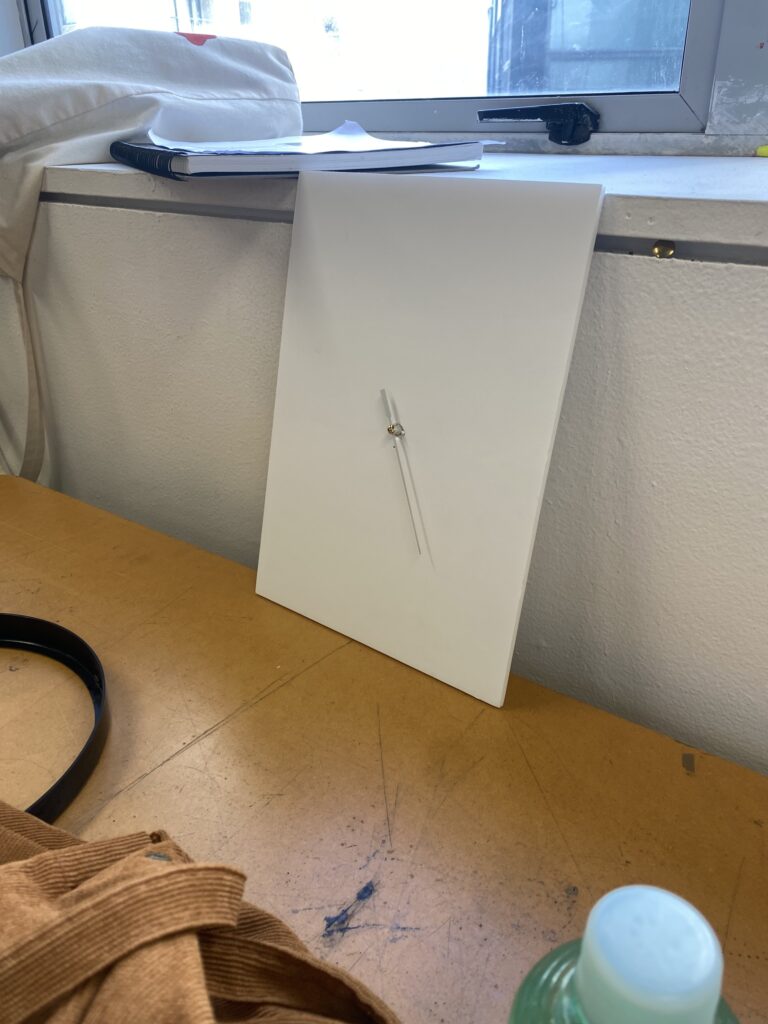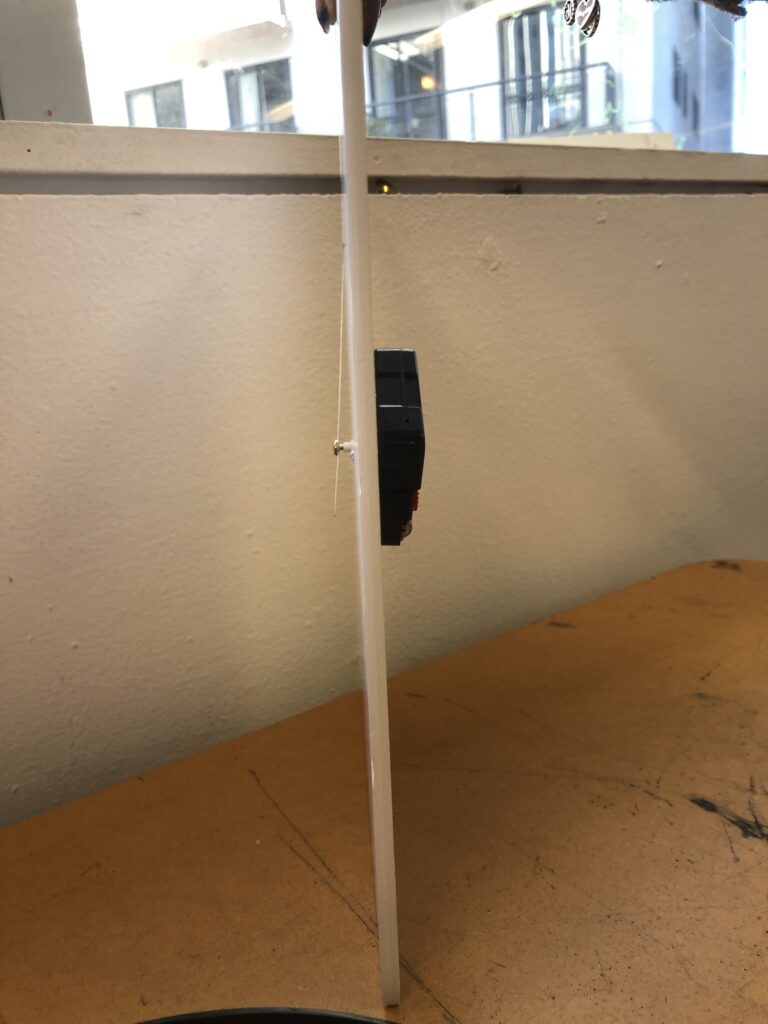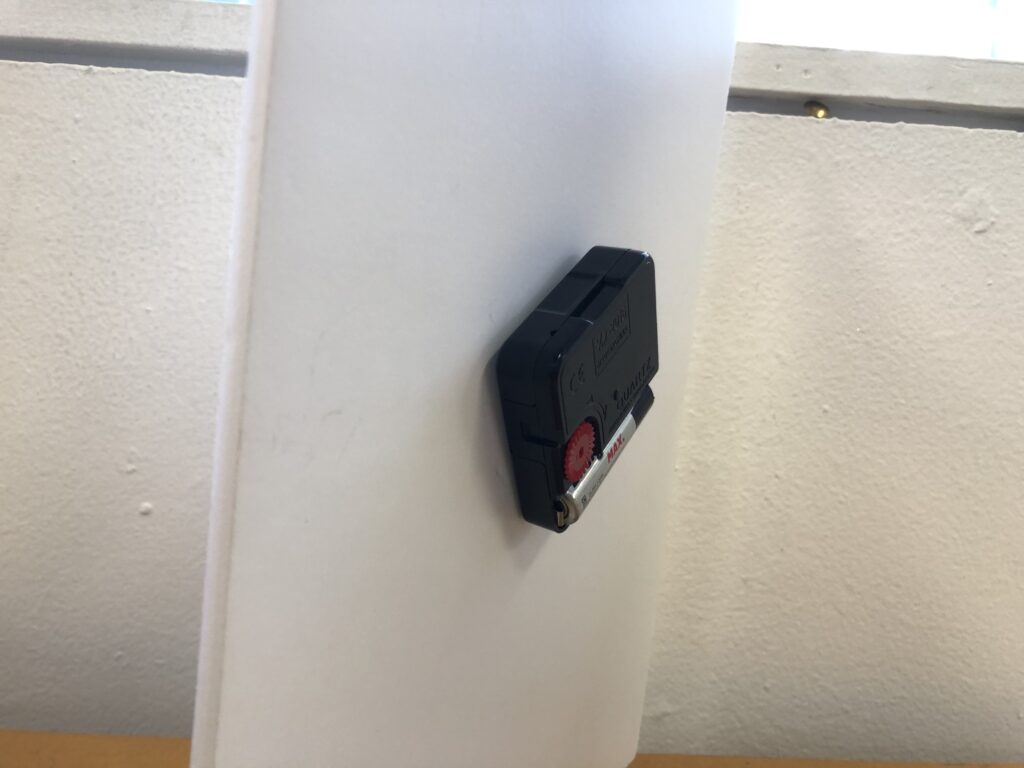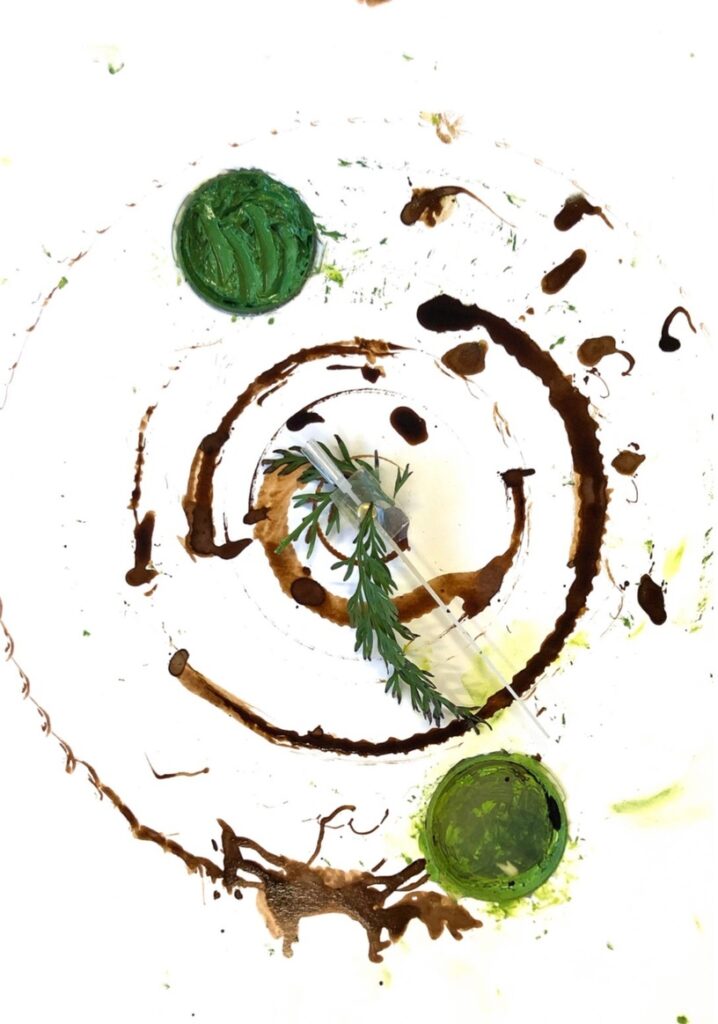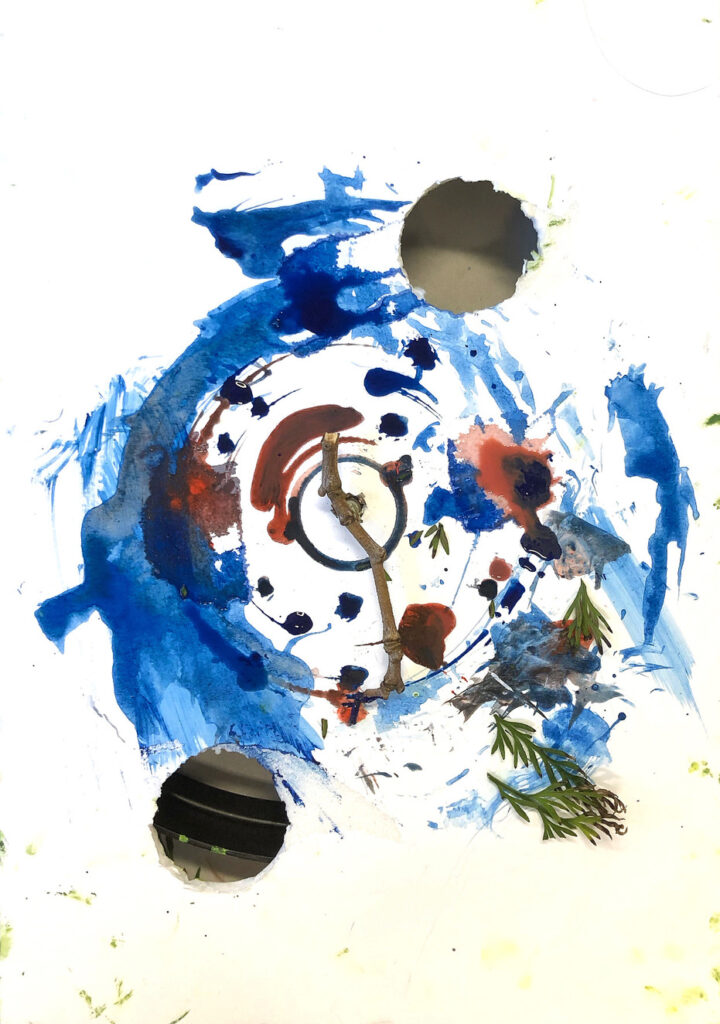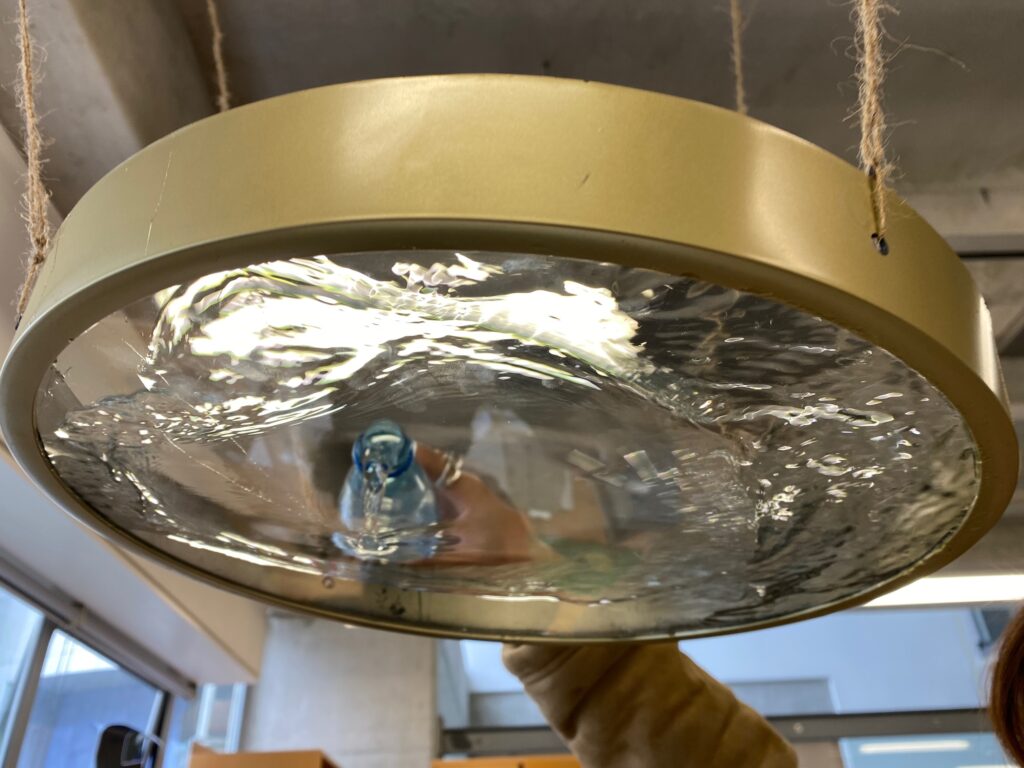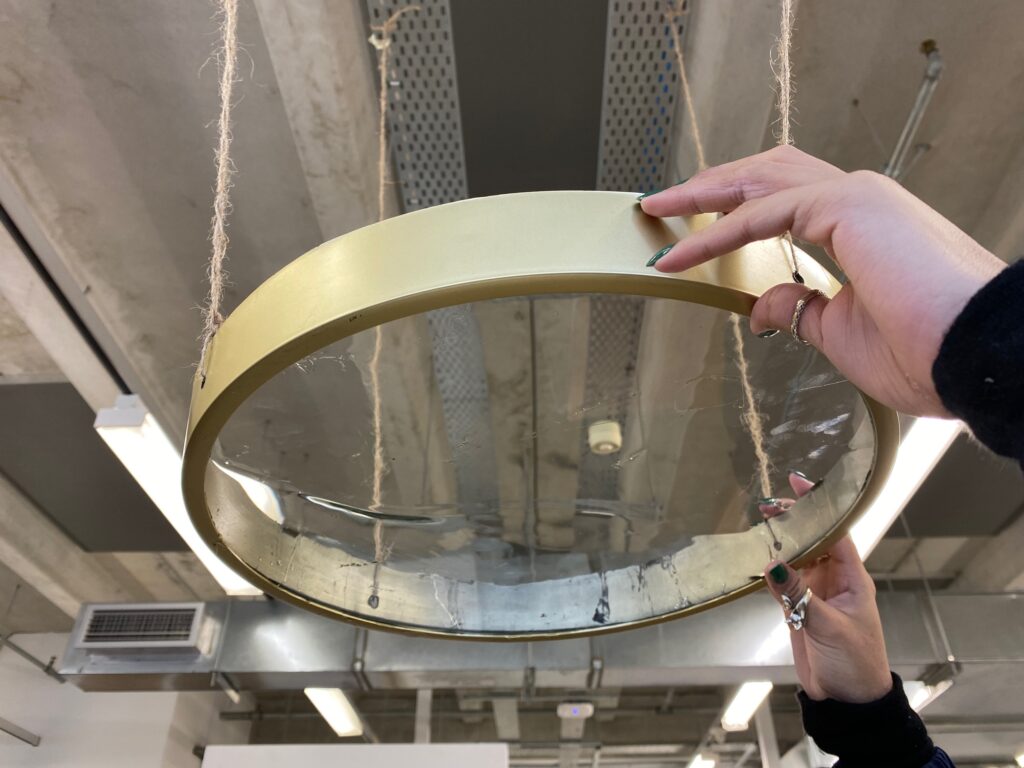After getting our materials, we started to work on our first trial. The clock is punctured through the A4 foam board, a circle cut out big enough for the pot of paint then attached a fern with tape around the hand of the clock. We came to realise that the plant/leaf has to be very light otherwise the hand of the clock will not move; another issue we encountered was that the plant needs to be at a certain part of the hand, towards the tip is too heavy but centre holds enough weight. If the plant is too long, it can get caught up on the edge of the foam board resulting in not being able to pick itself back up.
The substance we thought would last longer or would not absorb into the board was oil paint, however the paint is too thick and the plant cannot carry that much weight to go around in a full cycle. We tried acrylic paint and used abit of water so that it the paint wouldn’t be too thick.
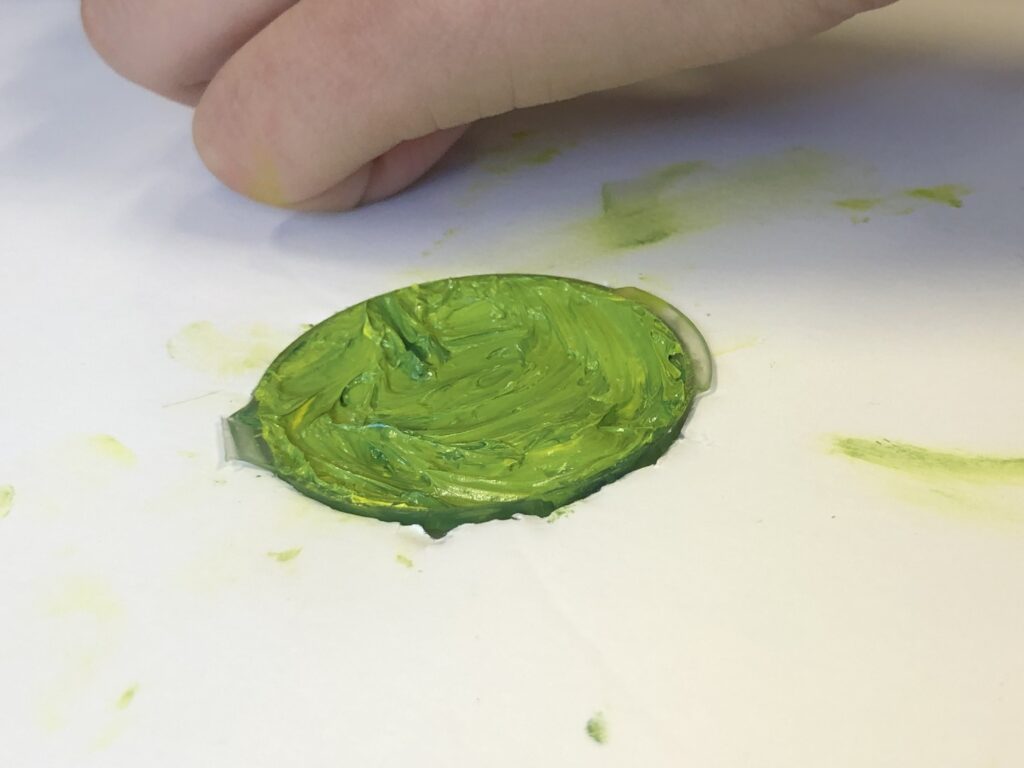
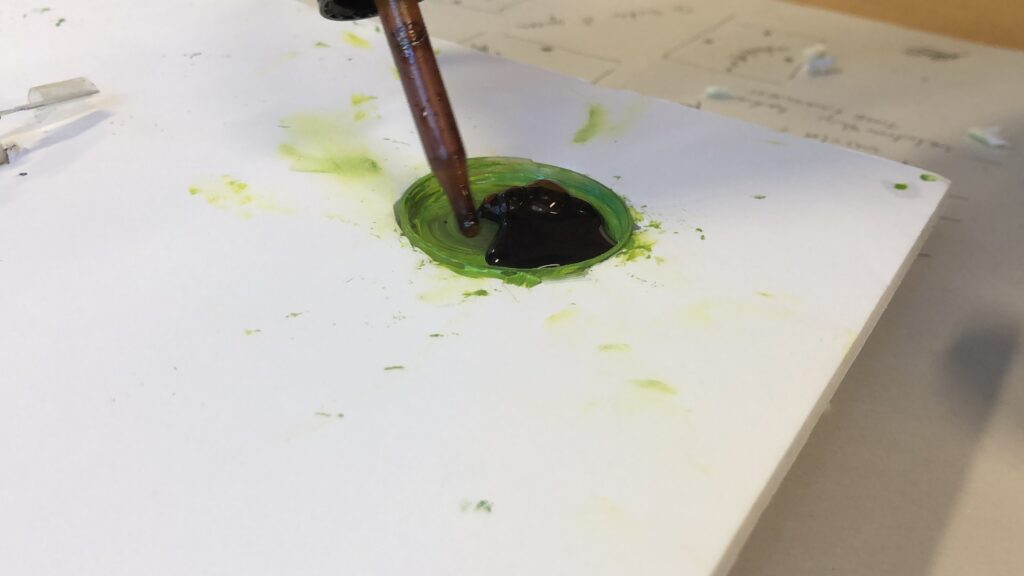
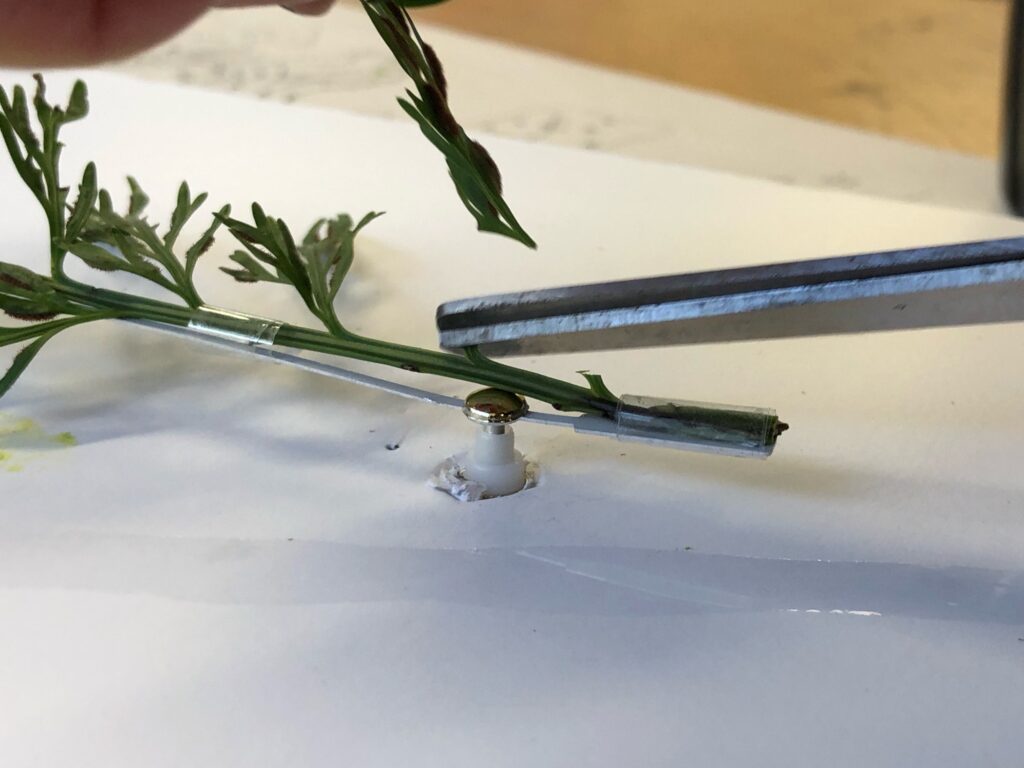
in order for the plant to be able to pick up the paint/ink we had to cut off some pieces 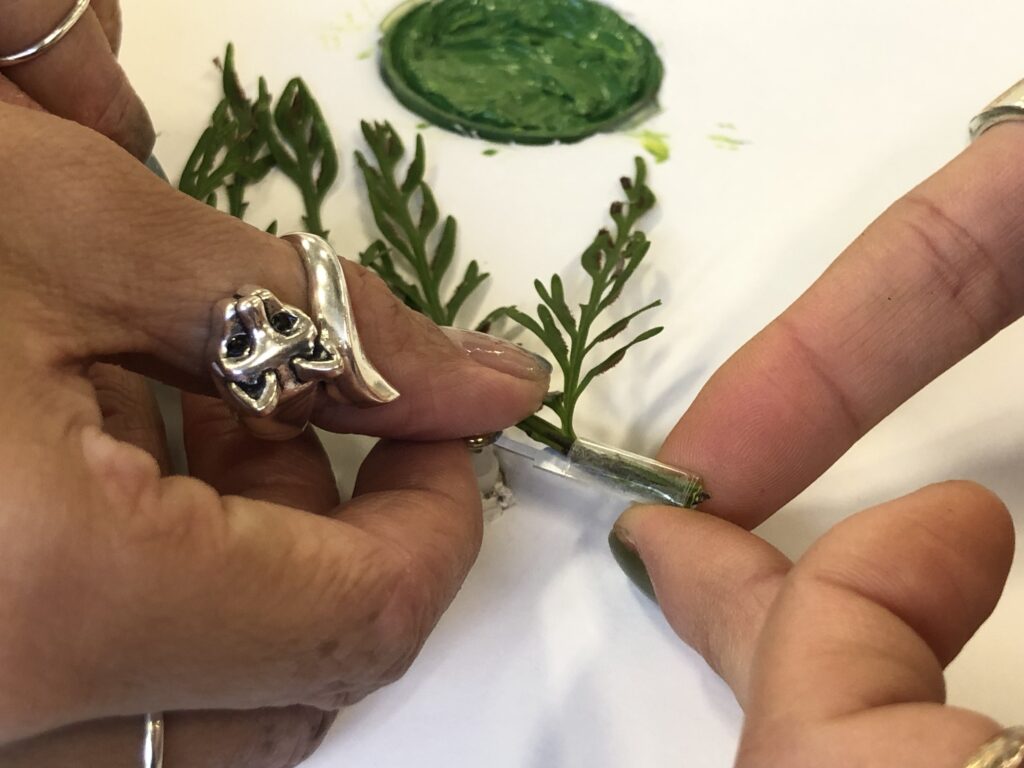
After some time, we found that the pots of paint were useless since the plant can’t pick uo the paint and spread it across the board so we resorted to using a eye dropper to place the paint onto the board and hope the plant would spread it across. During our discussions with our lecturers they suggested we extend and explore our ideas and how we could take our project further, how to utilise our clocks in a different way, how to work with time.
The following week, we discussed what other surfaces we could use. We thought of seasons and how to incorporate that into our work. We used the inside of the clock and placed down a whole bottle of play blue sand. As the plant attached to the hand, it will create a raked design, and can be erased with a simple shake of the clock.
There were parts of the clocks that were going to be thrown away and we didn’t want it go to waste, so we tried to somehow include it into our work. Our plan was the using the glass part of the clock, pour water into it and if the sun was shining that day, it would shine through the glass and the water would reflect onto the sand to resemble the beach. When we poured water into the clock whilst it was hung, water started to lean towards one side causing it to be unbalanced and water leaking out of the small holes we had to drill. Alongside that issue, some parts weren’t glued causing small cracks on the side and water spilling out. If we hung it too high, the reflection of the water couldn’t shine through, but if it was too low, you wouldn’t be able to see the effect we were trying to achieve, therefore we scratched the idea.
With the remaining empty clocks, we needed to come up with ways it could be interactive and simple. 2 white clocks were filled with white sand and acted as a sound at the beach. The backs of the clocks were glued to the other, and twine wrapped around and hung up to the ceiling. It was done in a way the sand would move around inside the clock and create noise; like a yo-yo.
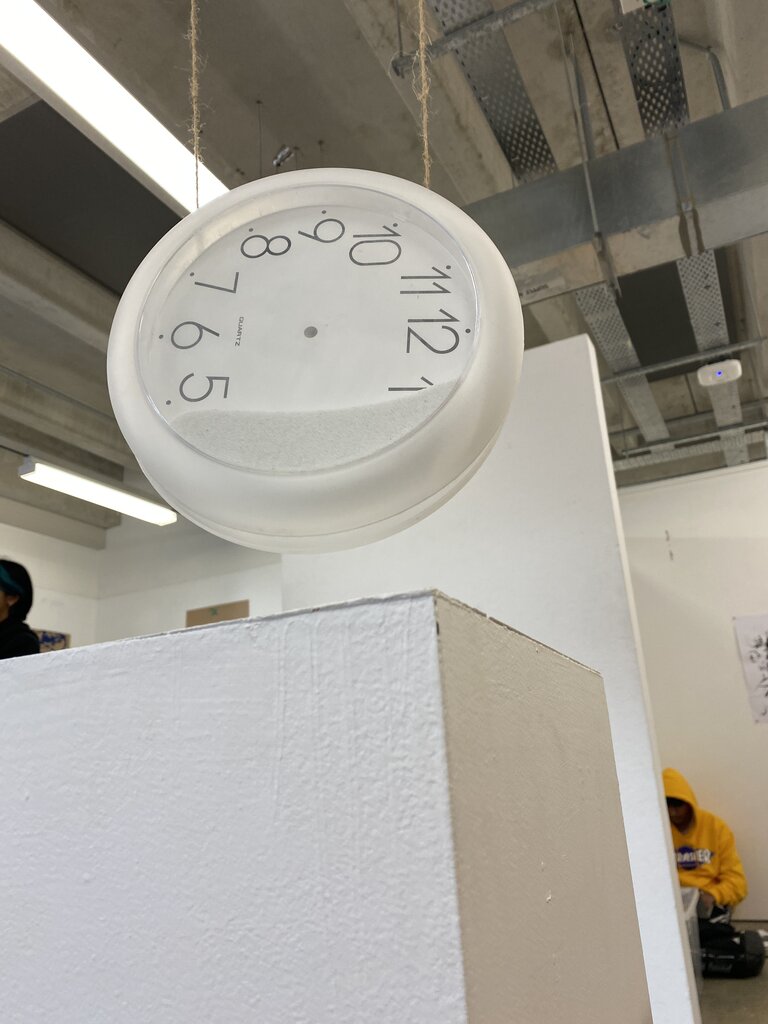
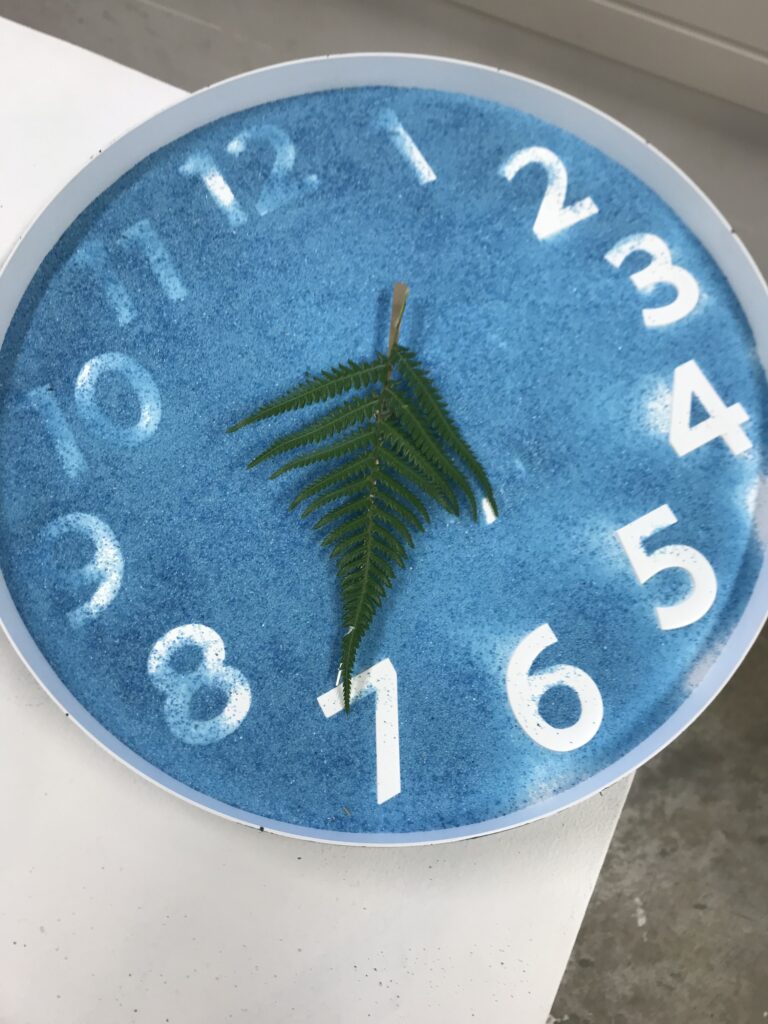
moves by the second 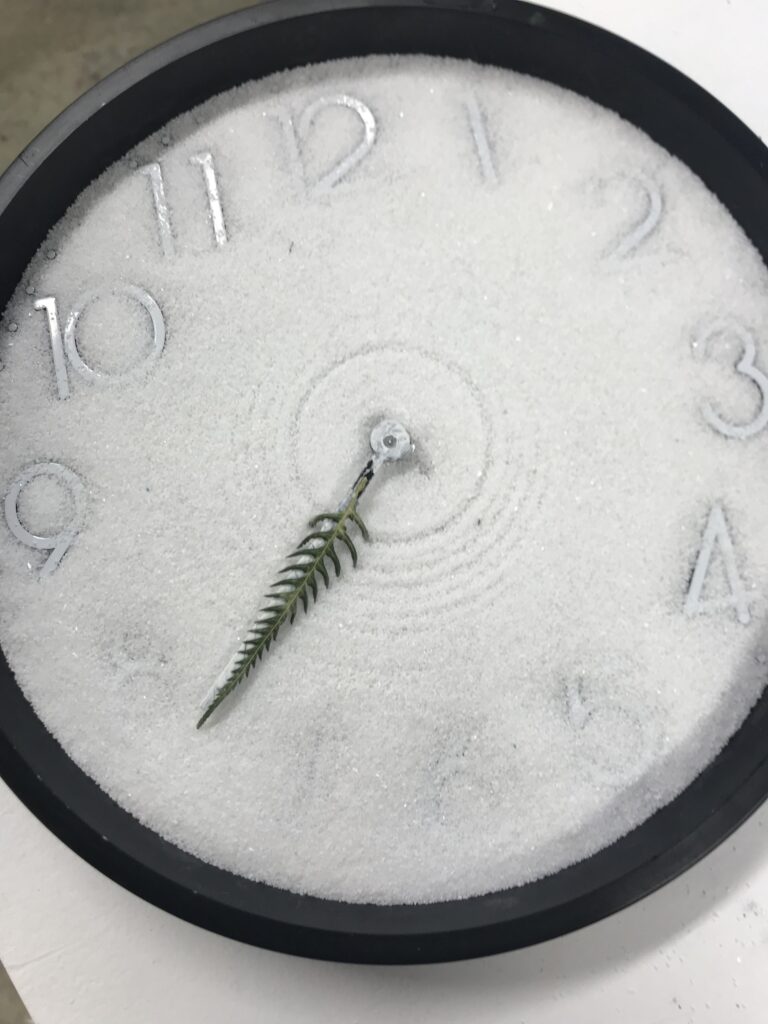
moves by the minute
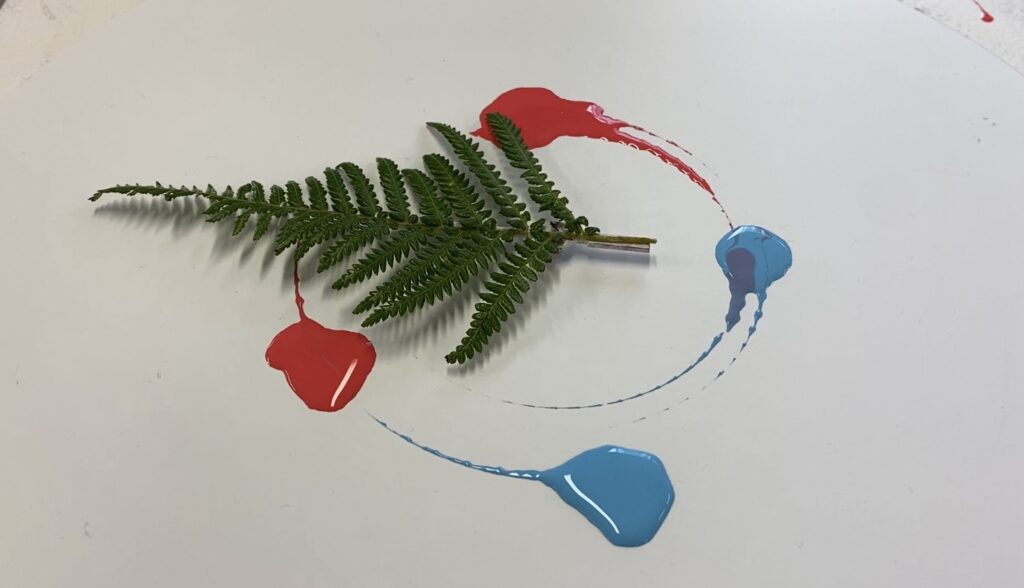
spring 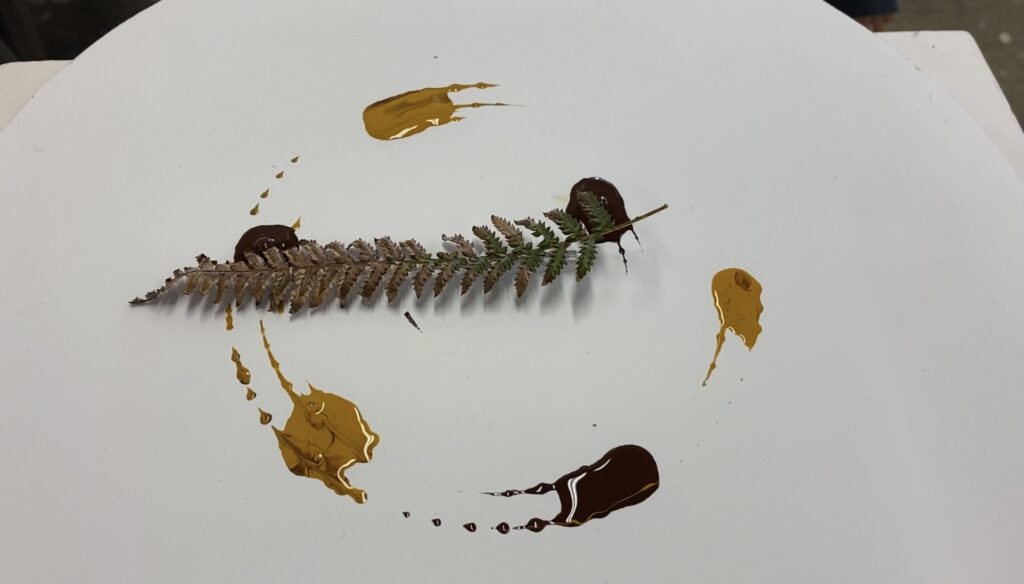
autumn
Reflection
During the past 2 weeks I was excited to do something different that used regular household items to create a machine to create art. If we were given more time, I would’ve liked to experiment more with the water reflection, and how we could’ve done it differently, and using different surface materials that wouldn’t absorb the liquid so easily. I am satisfied with the outcome and our idea surrounding time, sound and nature.

